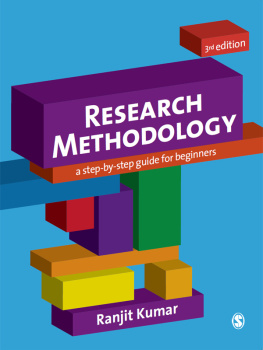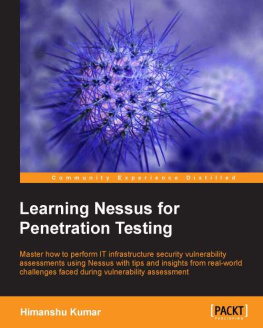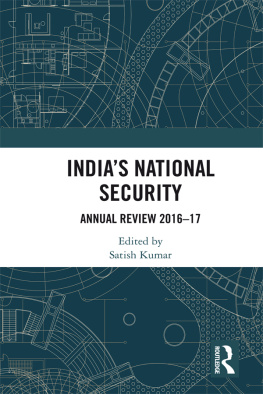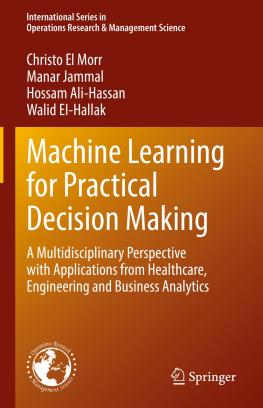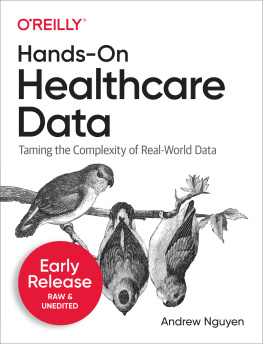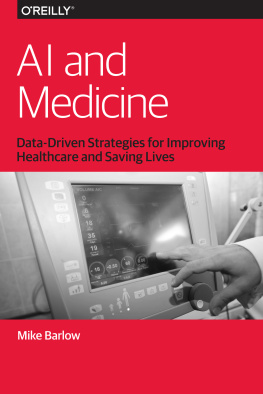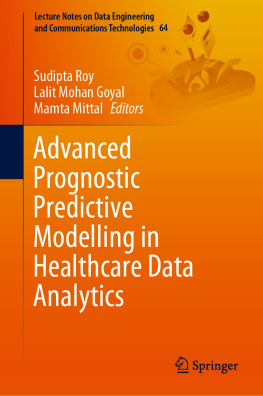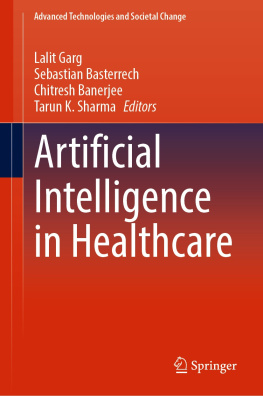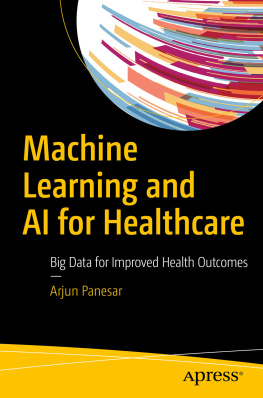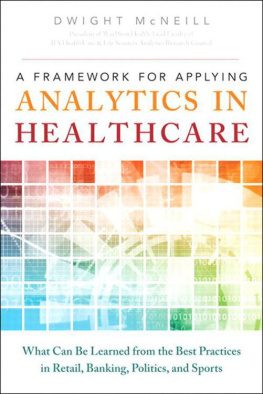
Healthcare Analytics
Made Simple
Techniques in healthcare computing using machine learning and Python
Vikas (Vik) Kumar

BIRMINGHAM - MUMBAI
Healthcare Analytics Made Simple
Copyright 2018 Packt Publishing
All rights reserved. No part of this book may be reproduced, stored in a retrieval system, or transmitted in any form or by any means, without the prior written permission of the publisher, except in the case of brief quotations embedded in critical articles or reviews.
Every effort has been made in the preparation of this book to ensure the accuracy of the information presented. However, the information contained in this book is sold without warranty, either express or implied. Neither the author, nor Packt Publishing or its dealers and distributors, will be held liable for any damages caused or alleged to have been caused directly or indirectly by this book.
Packt Publishing has endeavored to provide trademark information about all of the companies and products mentioned in this book by the appropriate use of capitals. However, Packt Publishing cannot guarantee the accuracy of this information.
Commissioning Editor: Veena Pagare
Acquisition Editor: Divya Poojari
Content Development Editor: Eisha Dsouza
Technical Editor: Sneha Hanchate
Copy Editor: Safis
Project Coordinator: Namrata Swetta
Proofreader: Safis Editing
Indexer: Rekha Nair
Graphics: Jisha Chirayil
Production Coordinator: Shantanu Zagade
First published: July 2018
Production reference: 1280718
Published by Packt Publishing Ltd.
Livery Place
35 Livery Street
Birmingham
B3 2PB, UK.
ISBN 978-1-78728-670-2
www.packtpub.com
To my parents, Viren and Sarita; my sister, Monica; and Tuly, my 2018 Person of the Year.
mapt.io
Mapt is an online digital library that gives you full access to over 5,000 books and videos, as well as industry leading tools to help you plan your personal development and advance your career. For more information, please visit our website.
Why subscribe?
Spend less time learning and more time coding with practical eBooks and Videos from over 4,000 industry professionals
Improve your learning with Skill Plans built especially for you
Get a free eBook or video every month
Mapt is fully searchable
Copy and paste, print, and bookmark content
PacktPub.com
Did you know that Packt offers eBook versions of every book published, with PDF and ePub files available? You can upgrade to the eBook version at www.PacktPub.com and as a print book customer, you are entitled to a discount on the eBook copy. Get in touch with us at service@packtpub.com for more details.
At www.PacktPub.com , you can also read a collection of free technical articles, sign up for a range of free newsletters, and receive exclusive discounts and offers on Packt books and eBooks.
Foreword
Analytics is now an integral part of healthcare. It helps to optimize treatments, improve outcomes, and the reduce the overall cost of care. The availability of biomedical, healthcare, and operational big data enables hospitals and health systems to leverage past data to predict the future of patients and their clinical pathways. Predictive modeling and healthcare data science also help to design care pathways and operational strategies that could help in streamlining various aspects of healthcare delivery. However, healthcare analytics is an exciting field that requires skills in biomedicine, data science, and the technical stack, including databases, programming, data visualization, statistics, and machine learning. While there are several books with an in-depth account of the healthcare space and analytics tools and methods, there not many easy-to-read books that integrate these things together.
In his new and exciting book, Dr. Vikas Kumar (Vik) has now blended the critical learning points of healthcare and computer science with mathematics and machine learning. Being a physician and a data scientist, Vik has done a tremendous job in compiling complex datasets and explaining several use cases in healthcare analytics with comprehensive code in MySQL and Python.
I am sure that Healthcare Analytics Made Simple will be an important addition to the library of any data scientist who's interested in understanding the key concepts of biomedical and healthcare data. It will be an indispensable companion for readers from the domains of clinical informatics and health informatics to gain critical skills in the design, development, and validation of machine learning models. This book will also be useful for physicians and biomedical scientists who are interested in understanding the landscape of healthcare analytics. The book is a joy to read, and I enjoyed working through the examples. To conclude, Healthcare Analytics Made Simple is attempting to fill a gap in the field of healthcare analytics by providing a complete and comprehensive guide, resulting in an inter-disciplinary book that will be an easy read for computer scientists, software engineers, data scientists, and healthcare professionals alike.
Dr. Shameer Khader, PhD
Director of Healthcare Data Science and Bioinformatics
Northwell Health, New York
Contributors
About the author
Dr. Vikas (Vik) Kumar grew up in the United States in Niskayuna, New York. He earned his MD from the University of Pittsburgh, but shortly afterwards he discovered his true calling of computers and data science. He then earned his MS in the College of Computing at Georgia Institute of Technology and has subsequently worked as a data scientist for both healthcare and non-healthcare companies. He currently lives in Atlanta, Georgia.
Thank you to Mark Braunstein, James Cheng, Shameer Khader, Bryant Menn, Srijita Mukherjee, and Bob Savage for their helpful comments on the book drafts.
About the reviewer
Seungjin Kim is currently a software engineer at Arcules, transforming video data into intelligence and providing a product based on distributed machine learning architecture. Previously, he was a software engineer at a genetic startup, providing a quality frontend user experience for patients accessing genetic products. He received his M.D. from the Medical School for International Health at the Ben-Gurion University of the Negev in Israel in 2015, and he received his B.S. in computer science and Engineering from the University of California in 2008.
Packt is searching for authors like you
If you're interested in becoming an author for Packt, please visit authors.packtpub.com and apply today. We have worked with thousands of developers and tech professionals, just like you, to help them share their insight with the global tech community. You can make a general application, apply for a specific hot topic that we are recruiting an author for, or submit your own idea.
Next page




